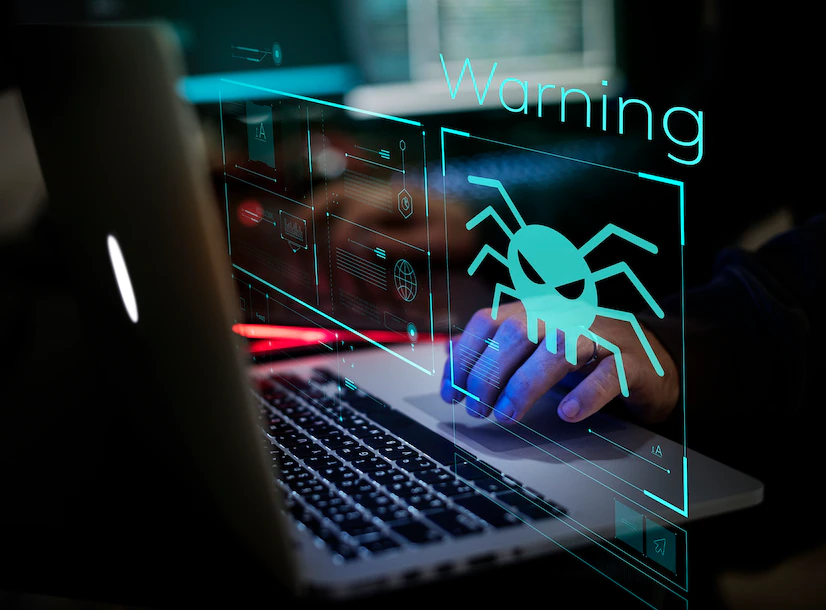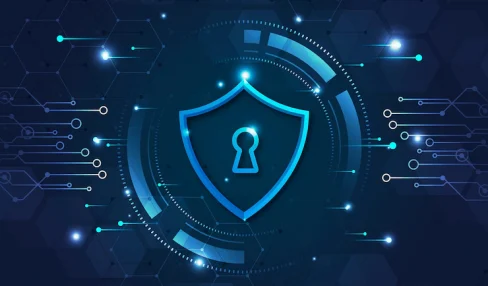5 Main Cybersecurity Risks For Small Businesses
5 Mins Read
Published on: 07 August 2023
Last Updated on: 08 November 2024

toc impalement
Small businesses don’t have the time or budget that major organizations have to fight cybercrime.
They also lack dedicated security teams who maintain and improve security — especially security professionals who can detect and mitigate more sophisticated attacks.
As a result, small firms have critical vulnerabilities that cybercriminals can exploit virtually at any moment.
If you’re like most SME business owners, you worry about potential data breaches, IT outages, and cyber-attacks — even more than your worry about AI, fire, and inflation.
Where do you even begin when it comes to cybersecurity risks?
What are the top five cyber threats for small businesses in 2023? Which cost-efficient measures can you take to protect your most valuable assets?
1 Malware Attacks

“Malware” is the umbrella term for various types of malicious software — including trojans and viruses.
The capabilities of different types of malware range from getting complete remote control of a device to recording one’s every keystroke.
When a virus finds its way into the infrastructure of your small business, it can affect the performance of your network by slowing it down or making it crash.
The main problem with malware attacks is that a large number of them happen every day. In 2022, there were as many as 5.5 billion malware attacks worldwide.
Then, there are zero-day attacks. These are new strains of malware that can bypass systems when your security tools can’t recognize them if they’re not registered in the database.
2 Phishing Via Email
Phishing schemes are the number one threat to small businesses. Virtually every employee has a business email, and those email addresses are easy to obtain.
Most phishing attacks aimed at small businesses are linked to emails. Scammers impersonate employees within the company who have authority or even trusted brands. They might even send invoices with the hope of a wire transfer.
But there is one common denominator within these emails. There is always a sense of urgency in the body of said emails. Action is required right away.
For instance, employees might get an email from the company CEO with the request to share a password and their credentials. And they do so because they believe it’s their boss at the other end.
Phishing is also used to deliver malware. The link in the email leads to an infected site or attachment containing hidden ransomware.
With proper training, your employees can become aware of the common signs of phishing threats.
3 Compromised Passwords
95% of cyber incidents are the result of human error. And the biggest human mistake of all is an easily hackable password.
For most breaches to occur, bad actors need to either find a gap in the security (detect some kind of technical flaw) or obtain credentials. It’s easier to exploit humans.
Weak passwords that consist of personal details, use common words and phrases, lack versatile characters, or are too short are vulnerable and easy to crack.
However, hacking passwords is not the only way a bad actor can get them.
Stolen credentials can also grant access to opportunistic criminals. Threat actors can find them via hacking forums and dark web marketplaces where they’re sold following a breach.
This is especially problematic if employees reuse their passwords for multiple personal and business accounts.
4 Insider Threats
As mentioned, the majority of cybercrime happens due to human error — which is why insider threats top the list as well. Here, disgruntled ex-employees that still have access to your network can cause a major cybersecurity incident.
They can grant access to a malicious third party (e.g. malicious hackers or competitors) or damage the finances or reputation of the company themselves by altering or leaking sensitive documents.
SMEs are particularly vulnerable to this because they tend to give access to most of the network to all employees.
Also, they might lack the security staff or cybersecurity solution that automatically removes the access privileges to former teams. This means that an employee might have access to the work account years after being fired.
To combat this, use security solutions such as role-based access controls where every employee can reach only the parts of the infrastructure they need to do their jobs.
5 Ransomware
One type of malware that has been concerning small businesses in recent years is ransomware. It’s capable of encrypting files, making them unusable without the right key. To unlock the documents, the victim has to pay the ransom.
This type of malicious software is widely used because it can encrypt sensitive documents that need special protection. Since even small businesses store a lot of personal data about their users and employees, they’re susceptible to this common cybersecurity threat.
Over the years, hackers have developed versatile strains of ransomware, and they have become difficult to detect. Some are capable of encrypting files, and others can lock you out of the entire infrastructure.
It’s also common to combine other kinds of attacks with it to put additional pressure on the victim to pay the ransom. The most common are DDoS attacks.
Ransomware can be used on devices that have vulnerabilities that haven’t been patched or devices where the software is not updated frequently.
For SMEs looking to keep abreast of emerging cyber threats and collaborate on intelligence sharing, the stix/taxii framework offers a systematic and trusted method for cyber threat information exchange.
Cybersecurity Hygiene Checklist For Small Businesses
To fight common cybersecurity threats with limited resources, start here:
- Have reputable malware and anti-virus protection
- Include employee training to build phishing awareness
- Teach the team how to set up strong passwords
- Request multi-factor authentication
- Update your software regularly to its safer version
- Create backups for the most important data
Conclusion
Hackers use similar techniques to target SMEs and major organizations. The major difference is that cyber criminals count on the lax security of small businesses — they find them to be easy victims compared to well-guarded corporations.
The majority of the cyber threats for small businesses mentioned above can be prevented with proper cybersecurity hygiene.
Start with setting up basic security tools and training your teams. After that, maintain security by ensuring frequent software updates and regular backups. And repeat.
Read Also:


















Comments Are Closed For This Article